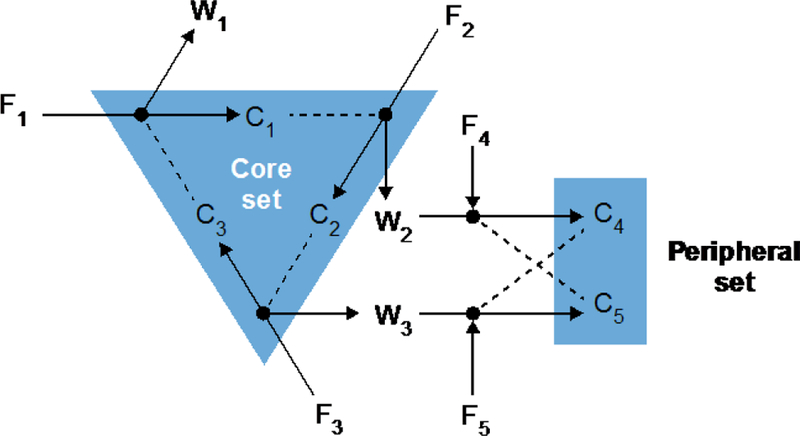Fig. 5.

Example of how rare chemical reactions, such as the localized production of C4 or C5 by a rare reaction between waste products from the original catalytic set and low-abundance food species, could expand the self-propagating system, resulting in movement of a pixel to a new metastable state (with high concentrations of C4 and C5). It is supposed that the newly formed non-food species C4 and C5 cross-catalyze one another formation and tend to attach to the same mineral surface as C1, C2 and C3. The chemical conversion of food to catalyst plus waste is represented with solid arrows, while dotted lines indicated catalysis.
